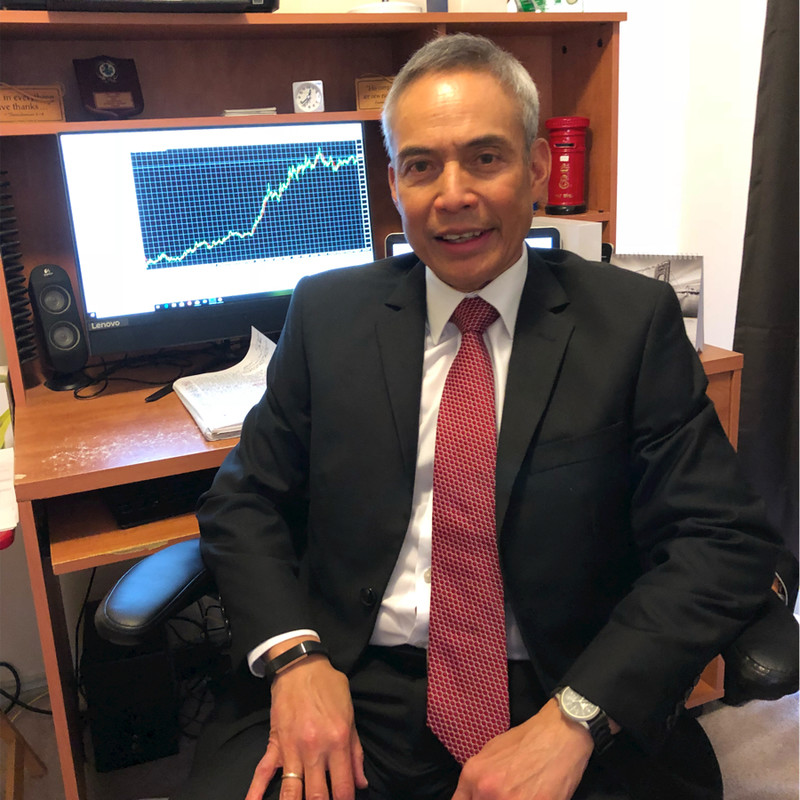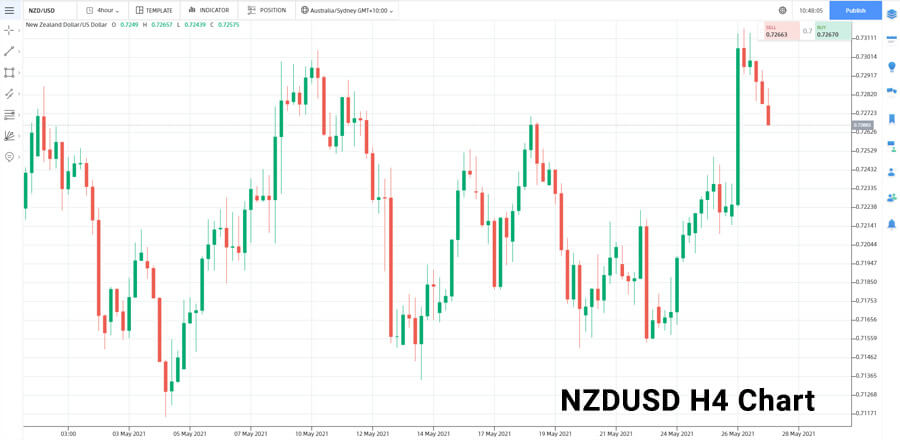USD, Yields Rebound, Quarles Ready to Talk Taper?

- Michael Moran , Senior Currency Strategist at ACY Securities
- 27.05.2021 08:00 am trading
Kiwi Outperforms, Keeps Bid on Hawkish RBNZ
Summary: The Dollar Index (USD/DXY), used by traders as a measure of the USD against a basket of currencies of US trade partners, rebounded 0.44% to 90.02 from 89.67 yesterday. Randal Quarles, Fed Vice-Chair for supervision, signalled that the time for the US central bank to think about slowing its pace of bond-buying is coming soon. Earlier this week, several Fed officials sought to downplay the prospects of rising inflation, which put US bond yields and the Dollar under pressure. The yield on the benchmark US 10-year treasury rose to 1.58% (1.56% yesterday). The Euro slid back under 1.22 to 1.2195 after trading to an overnight and 4-month high at 1.2263. A hawkish bent by New Zealand’s Central Bank (RBNZ) sent the Kiwi soaring to 0.73162 (overnight high) before settling at 0.7283 in New York. NZD/USD, referred to by traders as the “Flightless Bird” finished as best performing currency, up 0.9% against the Greenback. The RBNZ signalled that interest rates could rise in the second half of 2022. The Australian Dollar, however, was little changed at 0.7743 from 0.7750 yesterday. Elsewhere the USD/CAD pair rallied to 1.2122 from 1.2065. Against the Japanese Yen, the Greenback rose 0.32% to 109.13 (108.75). The Dollar was marginally lower against the Asian and Emerging Market Currencies. USD/CNH (US Dollar-Offshore Chinese Yuan) slumped 0.45% to 6.3840 (6.4100), cracking through the psychological 6.40 level. The USD buying interest at the 6.40 level pulled away which led to further selling.
While US yields ended higher, rival bond rates were mostly lower. Germany’s 10-year Bund yield dipped 3 basis points to -0.21%. Japan’s 10-year JGB yield eased to 0.06% (0.07%) while the UK Gilt ten-year rate was last at 0.75% (0.78% yesterday). In contrast, New Zealand’s 10-year treasury yield climbed to 1.86% (1.75%). Wall Street stocks ended with marginal gains. The DOW added 0.12% to 34,345 while the S&P 500 finished at 4,195 (4,187). Economic data released yesterday were few and mostly secondary. New Zealand’s Balance of Trade rose to +NZD 388 million surplus, bettering the previous surplus of +NZD 39 million. Australia’s Construction Work Done (Q1) rose to 2.4%, beating median forecasts at 2.2%. The RBNZ maintained its monetary policy, keeping its Overnight Cash Rate at 0.25%. France’s Consumer Confidence Index rose to 97, matching forecasts and from a previous 94.
- EUR/USD – The Euro reversed its gains after trading to an overnight and 4-month high at 1.2263. The single currency closed at 1.2195, down 0.42% on the day. Overnight low traded was 1.2182. Speculative long Euro bets pared their positions when the single currency peaked.
- NZD/USD – The hawkish bent from the RBNZ saw the Kiwi soar to 0.73162 (overnight and 3-month peak) before easing to settle at 0.7275 in early Sydney. The focus shifts back to the US Dollar ahead of the US Durable Goods Orders report, out tonight.
- AUD/USD – Unlike its smaller cousin, the Kiwi, the Battler ended its New York session little changed at 0.7744 (0.7750 yesterday). The Australian Dollar managed to climb to an overnight high at 0.7796 before easing at the close.
- USD/CAD – Against the Loonie, the US Dollar rebounded 0.46% to 1.2122 from yesterday’s 1.2065 opening. The Greenback had been hovering near September 2017 lows (between 1.2040-70) for almost a week now before it finally popped higher.

(Source: Finlogix.com)
On the Lookout: Economic reports released today will see a data dump (from ACY’s Finlogix). The day kicks off with Australia’s Q1 Private Capital Expenditure report (f/c to dip to 2.0% from 3.0%). European reports start with Germany’s GFK Consumer Climate Index (f/c -5.3 from -8.8). Switzerland releases its Trade Balance (f/c Surplus of CHF 4.85 bio from previous Surplus of CHF 5.82 bio). Germany’s Bundesbank President Weidmann is due to speak at an online event celebrating the 70th anniversary of the German Economic Institute). BOE MPC member Vlieghe is delivering a speech on government bond yields and growth and inflation in an online event hosted by the University of Bath. The US starts off with its Annualised Preliminary Q1 GDP report (f/c at 6.5% from 6.4%). The Preliminary GDP Price Index follows (f/c 4.1% from 4.1%). US Weekly Unemployment Claims follow (f/c 427K from 444K). US Durable Goods Orders (April) are expected to rise to 0.7% from an upwardly revised March number of 0.8% (0.5%). Core Durable Goods (excluding transportation items) are forecast at 0.8% from a previously revised upward 1.9% (from 1.6%). US April Pending Home Sales round up the day’s data dump (f/c 0.8% from previous 1.9%).
The Durable Goods Orders, a leading indicator of production is a key number for the US economy and thus the Dollar and yields.
Trading Perspective: All eyes on tonight’s key US Durable Goods Orders which are expected to rise (range 0.7% to 0.8%). Any number higher than 0.8%, 0.9% and up, would see a spike in US yields and the Greenback. A weaker Core DGO number (0.5% and lower) would trigger Dollar selling and a drop in yields. The effect on US bond yields and the Dollar will be key for any break outs of the week’s trading range. Let’s bear in mind that total net Speculative USD short (long Currency) currently total USD 15.5 billion for the week ended May 18. This compares with a net total short of USD 5.2 billion 5 weeks ago. All things being equal (ie data expectations are matched), the risk is skewed for a further Greenback rebound.
- EUR/USD – The Euro has traded in a relatively tight 1.2160-1.2260 range for a week now. In early Sydney trade, the single currency currently sits at 1.2192. Immediate support can be found at 1.2180 followed by 1.2160. There is immediate resistance at 1.2220 and 1.2260. A lower US DGO number will see 1.2260 tested, possibly up to 1.2300. A strong number will see 1.2160, and eventually 1.2100. Look for an initial trade between 1.2170-1.2240. The latest COT report saw speculators increase their long Euro bets (week ended May 18) by an additional 5,900 lots (total +EUR 99,858 lots). Danger signal to the longs.
- NZD/USD – The Kiwi kept its bid tone, finishing with a gain of 0.9% against the US Dollar, closing at 0.7290. NZD/USD traded to 0.73162, a 3-month high, before easing. The RBNZ suggested that it would raise interest rates in late 2022. This morning upbeat comments by RBNZ Governor Adrian Orr did nothing to move the Kiwi as it was all said yesterday. NZD/USD currently trades at 0.7275. Immediate support lies at 0.7240 followed by 0.7210 and 0.7160. Immediate resistance can be found at 0.7295 and 0.7330. Look for consolidation in a likely trading range today of 0.7250-0.7320. Prefer to sell rallies.
- USD/CAD – The Dollar rebounded against near September 2017 lows against the Loonie to finish at 1.2122 from 1.2060 yesterday. Overnight high traded was 1.21242. In early Sydney trade, USD/CAD is currently trading around 1.2130. Immediate resistance lies at 1.2140 followed by 1.2170. Support can be found at 1.2100 and 1.2070. The latest COT report (week ended May 18) saw net speculative long CAD bets climb by +CAD 7,500, the next largest against the USD (largest was the Euro) among the 10 IMM currencies. Look to buy dips under 1.2100.
- AUD/USD – The Aussie also traded in a 0.7730-0.7795 range before easing to close at 0.7742, under the 0.7750 level. This morning AUD/USD trades at 0.7738. The risk is for a lower Aussie with immediate support found at 0.7710 followed by 0.7680. Immediate resistance lies at 0.7750 followed by 0.7780. The key for the Aussie today will be the US Dollar. A Greenback rally could see the AUD/USD break the support at 0.7680, opening the way for lower. Meantime, look for a likely trade of 0.7710-0.7760 in Asia. Risk, if US data outperforms, is lower.
Happy Thursday and trading all.

























